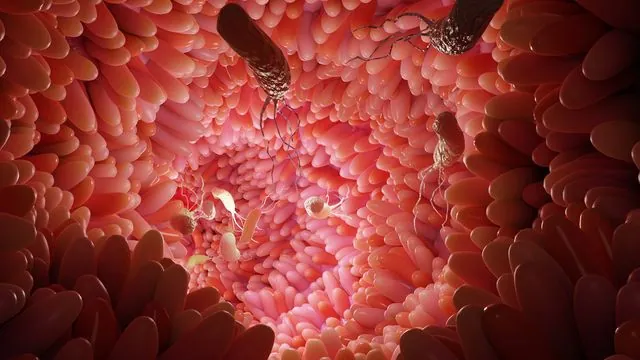
Groundbreaking Discovery: How Salmonella Harnesses a Tiny RNA to Thrive in the Gut!
2025-01-15
Author: Rajesh
In a recent publication in the prestigious Proceedings of the National Academy of Sciences (PNAS), researchers have made a significant breakthrough in understanding how Salmonella enterica, a notorious pathogenic bacterium, adeptly adapts to the human intestinal environment. Central to this adaptation is a newly identified small RNA, aptly named ManS, which orchestrates the metabolism of N-acetylneuraminic acid (Neu5Ac) to enhance the pathogen’s survival during infection.
Key Highlights:
The Power of a Small RNA: ManS, which originates from the 3' untranslated region (UTR) of mRNA through a unique noncanonical cleavage by the enzyme RNase III, plays a crucial role in regulating Neu5Ac and its derivative, N-acetylmannosamine (ManNAc).
Regulatory Control: Various isoforms of ManS are found to control an array of metabolic processes, including those linked to glycan synthesis and energy production, fundamentally altering the bacterium's metabolic landscape.
Insights into Pathogenesis: By boosting Salmonella’s fitness in the gut, ManS not only reveals the bacterium's clever survival strategies but also opens doors for potential therapeutic targets aimed at combating infections.
The collaborative effort led by Dr. CHAO Yanjie from the Shanghai Institute of Immunity and Infection and Dr. WANG Chuan from Fudan University uncovers layered complexity in how Salmonella engages with host environments. Neu5Ac, a prevalent form of sialic acid, serves dual purposes as a nutrient source and a receptor for various pathogens, including influenza viruses. This study sheds light on the intricate metabolic pathways employed by Salmonella to exploit Neu5Ac effectively.
Through innovative comparative genomic analyses, the researchers discovered a genomic island in Salmonella composed of five previously uncharacterized proteins along with the ManS RNA. This island is responsible for facilitating Neu5Ac metabolism. They demonstrated that ManNAc, a byproduct of Neu5Ac degradation, activates specific genes within this genomic region through a suite of methods, including structure predictions and gene knockout studies.
Even more compelling is the method by which ManS is generated. The conventional understanding is that RNase III targets double-stranded RNA, yet in this case, it cleaves single-stranded regions of mRNA, producing ManS with diverse isoforms that distinctly regulate various metabolic genes. The study highlights how certain ManS isoforms repress essential components, such as the GlcNAc phosphotransferase system permease, thereby modulating both primary and secondary metabolic pathways linked to ManNAc usage.
The implications of this discovery transcend mere microbiology; they pose questions about how pathogens evolve to survive and flourish within hostile environments like the human gut, which is rich in immune responses and competition from other gut flora. Moreover, this research paves the way for innovative anti-infection strategies that target these molecular mechanisms, setting the stage for a new frontier in the fight against bacterial infections.
This study not only broadens our understanding of RNA processing but also anchors ManNAc as a pivotal factor in bacterial adaptation, garnering attention from the scientific community for its potential applications in combating Salmonella infections and possibly other pathogens that exploit similar metabolic pathways. Stay tuned for more groundbreaking discoveries in the fight against infections!

 Brasil (PT)
Brasil (PT)
 Canada (EN)
Canada (EN)
 Chile (ES)
Chile (ES)
 Česko (CS)
Česko (CS)
 대한민국 (KO)
대한민국 (KO)
 España (ES)
España (ES)
 France (FR)
France (FR)
 Hong Kong (EN)
Hong Kong (EN)
 Italia (IT)
Italia (IT)
 日本 (JA)
日本 (JA)
 Magyarország (HU)
Magyarország (HU)
 Norge (NO)
Norge (NO)
 Polska (PL)
Polska (PL)
 Schweiz (DE)
Schweiz (DE)
 Singapore (EN)
Singapore (EN)
 Sverige (SV)
Sverige (SV)
 Suomi (FI)
Suomi (FI)
 Türkiye (TR)
Türkiye (TR)
 الإمارات العربية المتحدة (AR)
الإمارات العربية المتحدة (AR)